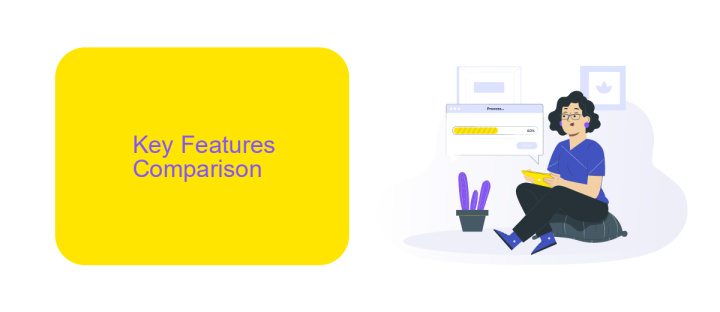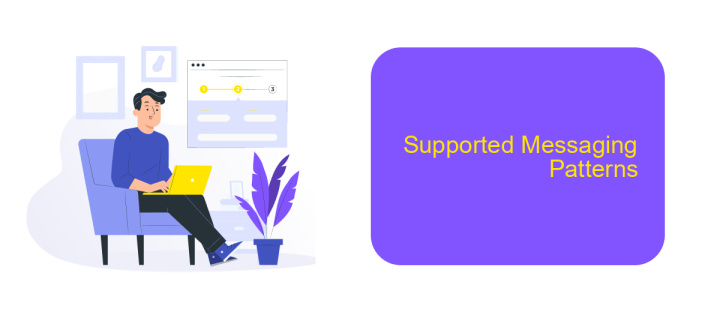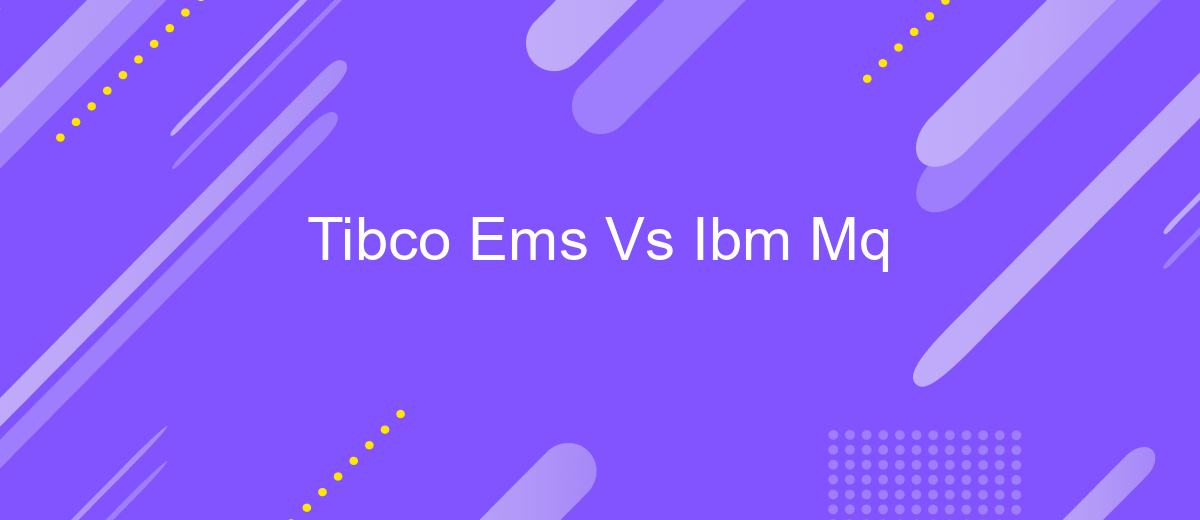Tibco Ems Vs Ibm Mq
When it comes to enterprise messaging solutions, Tibco EMS and IBM MQ are two of the most prominent contenders in the market. Both platforms offer robust features for reliable, high-performance message queuing, but they cater to different needs and use cases. This article delves into a comparative analysis of Tibco EMS and IBM MQ, highlighting their strengths, weaknesses, and ideal applications.
Introduction
In the world of enterprise messaging systems, Tibco EMS and IBM MQ are two prominent solutions that businesses often consider for their messaging needs. Both platforms offer robust features, yet they cater to different requirements and use cases. Understanding the key differences and strengths of each can help organizations make an informed decision.
- Reliability: Both Tibco EMS and IBM MQ provide high reliability and ensure message delivery without loss.
- Scalability: IBM MQ is known for its exceptional scalability, while Tibco EMS also offers strong scalability but might require more configuration.
- Integration: Tibco EMS integrates seamlessly with other Tibco products, whereas IBM MQ has broader support for various middleware and platforms.
- Ease of Use: IBM MQ is often praised for its user-friendly interface, while Tibco EMS offers extensive customization options.
For businesses looking to streamline their integration processes, tools like ApiX-Drive can be invaluable. ApiX-Drive simplifies the connection between different applications and services, making it easier to implement and manage your messaging systems. Whether you choose Tibco EMS or IBM MQ, leveraging such integration tools can enhance your overall system efficiency and reliability.
Key Features Comparison

Tibco EMS and IBM MQ are both robust messaging solutions, but they have key differences in their feature sets. Tibco EMS excels in its high-performance messaging capabilities, offering low latency and high throughput, making it ideal for real-time data processing. It also provides seamless integration with other Tibco products, enhancing its utility in complex enterprise environments. On the other hand, IBM MQ is renowned for its reliability and extensive support for a variety of platforms and languages, ensuring consistent message delivery and broad compatibility across different systems.
When it comes to integration and ease of use, services like ApiX-Drive can simplify the process of connecting Tibco EMS and IBM MQ with other applications. ApiX-Drive offers a user-friendly interface for setting up integrations without the need for extensive coding, making it easier to automate workflows and data transfers. This can be particularly beneficial for businesses looking to streamline their operations and improve efficiency by leveraging the strengths of both messaging platforms.
Architectural Differences

TIBCO EMS and IBM MQ are both robust messaging middleware solutions, but they exhibit key architectural differences that influence their use cases and performance. TIBCO EMS is designed for high-throughput and low-latency messaging, leveraging a publish/subscribe model that supports real-time data distribution. In contrast, IBM MQ focuses on guaranteed message delivery and transactional integrity, making it ideal for applications requiring reliable and secure message exchange.
- Message Delivery: TIBCO EMS supports both point-to-point and publish/subscribe models, while IBM MQ emphasizes assured delivery with persistent messaging.
- Scalability: TIBCO EMS is optimized for horizontal scalability, allowing for efficient scaling across multiple nodes. IBM MQ, on the other hand, scales vertically with robust clustering capabilities.
- Integration: Both platforms offer extensive integration options, but IBM MQ provides deeper integration with IBM's suite of enterprise solutions. For seamless integration with various applications, services like ApiX-Drive can be utilized to automate and streamline workflows across both platforms.
These architectural differences make TIBCO EMS suitable for scenarios requiring rapid data dissemination, while IBM MQ is better suited for environments where message reliability and security are paramount. Understanding these distinctions is crucial for selecting the right messaging solution for your enterprise needs.
Supported Messaging Patterns

When comparing TIBCO EMS and IBM MQ, it is crucial to consider the supported messaging patterns, as these define how messages are exchanged and processed within a system. Both platforms are designed to handle a variety of messaging scenarios, ensuring robust communication between different applications and services.
TIBCO EMS and IBM MQ support several core messaging patterns, making them versatile for various use cases. These patterns include point-to-point messaging, publish/subscribe, request/reply, and message streaming. Understanding these patterns helps in selecting the right messaging system for your specific needs.
- Point-to-Point: Ensures a message is delivered to a single consumer, ideal for tasks requiring guaranteed delivery.
- Publish/Subscribe: Allows multiple consumers to receive messages from a single publisher, suitable for broadcasting events.
- Request/Reply: Facilitates synchronous communication, where a response is needed for each request.
- Message Streaming: Supports continuous data flow, crucial for real-time analytics and monitoring.
For seamless integration and automation of these messaging patterns, services like ApiX-Drive can be highly beneficial. ApiX-Drive simplifies the setup of data flows between different systems, ensuring that your messaging infrastructure is both efficient and scalable. This can significantly reduce the complexity of managing multiple communication channels.
Conclusion and Recommendation
In conclusion, both Tibco EMS and IBM MQ offer robust messaging solutions that cater to different business needs. Tibco EMS excels in its ease of use and integration capabilities, making it an ideal choice for organizations looking for a straightforward and efficient messaging system. On the other hand, IBM MQ stands out with its high-level security features and reliability, which are crucial for enterprises requiring a more secure and stable messaging environment.
For businesses seeking to streamline their integration processes, leveraging tools like ApiX-Drive can be highly beneficial. ApiX-Drive simplifies the integration of various applications and services, enhancing the overall efficiency and effectiveness of your messaging system. Therefore, the choice between Tibco EMS and IBM MQ should be based on your specific requirements, keeping in mind the potential advantages of using integration services like ApiX-Drive to optimize your workflow.
FAQ
What are the main differences between TIBCO EMS and IBM MQ?
Which messaging system is easier to set up and configure?
How do TIBCO EMS and IBM MQ handle message persistence and reliability?
Can I use automation and integration services to streamline the setup of TIBCO EMS or IBM MQ?
Which system offers better performance under high load conditions?
Do you want to achieve your goals in business, career and life faster and better? Do it with ApiX-Drive – a tool that will remove a significant part of the routine from workflows and free up additional time to achieve your goals. Test the capabilities of Apix-Drive for free – see for yourself the effectiveness of the tool.

